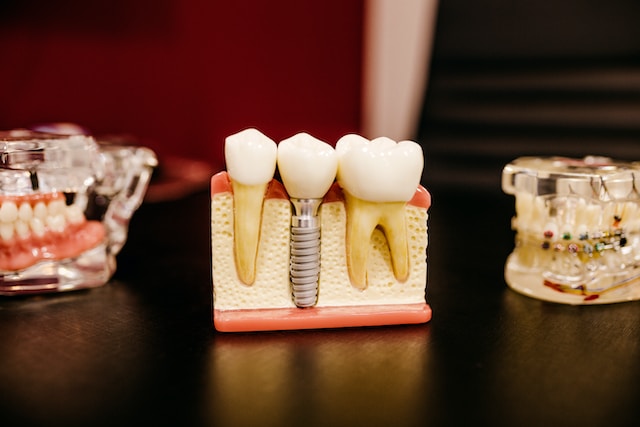Introduction to Dental Implants and Oral Anatomy

Dental implants have revolutionized restorative dentistry, offering a reliable and aesthetically pleasing option for individuals grappling with tooth loss,” says Enhanced Dental Studios Runcorn. However, the success of dental implant procedures is deeply rooted in a comprehensive understanding of oral anatomy and physiology. This article aims to elucidate the critical anatomical and physiological aspects that are fundamental to the successful placement and integration of dental implants. For those in Palestine, TX, seeking expert dental implant services, Allen Family Dentistry offers personalized care and advanced expertise to ensure the best outcomes for your dental health.
The Significance of Bone Structure in Implant Dentistry
The foundation of a successful dental implant lies in the jawbone’s quality and quantity. The human jawbone comprises two main parts: the maxilla (upper jaw) and the mandible (lower jaw). Dental implants are titanium posts surgically inserted into the jawbone, where they serve as artificial tooth roots. For an implant to be successful, the bone must have sufficient density and volume to support and integrate with the implant.
Bone density varies in different parts of the jaw. The posterior (back) areas of the upper jaw tend to have less bone density compared to the lower jaw. This difference is crucial in planning implant placement, as areas with lower bone density may require additional procedures, such as bone grafting, to ensure the implant’s stability.
The Role of the Periodontium in Supporting Dental Implants
The periodontium, consisting of the gums, periodontal ligament, cementum, and alveolar bone, plays a vital role in the health and stability of both natural teeth and dental implants. The gums or gingiva must be healthy to provide a protective seal around the dental implants. Inflammation or infection in the gums can lead to peri-implantitis, a condition similar to periodontitis, which can jeopardize the implant’s success.
The alveolar bone, part of the jawbone that holds the teeth, is also critical in dental implantology. After tooth loss, the alveolar bone begins to resorb or diminish, which can compromise the bone quality needed for implant placement. Understanding the dynamics of bone resorption and regeneration is essential for timing the implant procedure correctly.
Nerve and Blood Supply Considerations
A thorough knowledge of the nerve and blood supply in the jaw is crucial for avoiding complications during implant surgery. The inferior alveolar nerve, which runs through the mandible, and the maxillary sinus in the upper jaw are two critical anatomical landmarks. Accidental damage to the inferior alveolar nerve can lead to numbness or tingling in the lower lip and chin, while improper implant placement in the upper jaw can puncture the sinus membrane.
Ensuring adequate blood supply to the implant site is also vital for the healing and osseointegration process. Osseointegration, the fusion of the implant with the bone, is critical for the implant’s long-term stability and function. Adequate blood flow not only supports healing but also delivers the necessary nutrients and immune cells to the site, aiding in the prevention of infections.
Practical Implications of Anatomy and Physiology in Dental Implantology
For those considering dental implants in Palestine, TX, understanding the practical implications of anatomy and physiology in implantology is crucial. To assist in this, a useful link has been provided, offering comprehensive insights and expert guidance specific to dental implants in the Palestine, TX area. This resource is invaluable for anyone looking to make an informed decision about their dental implant journey.
Implications of Oral Anatomy in Implant Placement
The intricate knowledge of oral anatomy not only aids in avoiding surgical complications but also in optimizing implant placement for functional and aesthetic outcomes. For instance, understanding the variations in bone density across different jaw areas helps in selecting the appropriate implant type and size. In areas with lower bone density, such as the upper posterior jaw, dentists might opt for implants with specific designs, like those with a wider diameter or those made from materials that promote bone integration.
Customizing Treatment Based on Individual Anatomy
Each patient’s oral anatomy is unique, which necessitates a personalized approach to dental implant treatment. Advanced imaging techniques like Cone Beam Computed Tomography (CBCT) are often used to gain a detailed understanding of a patient’s bone structure, nerve locations, and sinus anatomy. This information is crucial for creating a precise surgical plan that minimizes risks and maximizes the success of the implant.
Managing Bone Loss and Augmentation Procedures
In cases where patients have experienced significant bone loss, additional procedures such as bone grafting may be necessary before implant placement. Bone grafting involves adding bone or bone-like materials to the jaw to increase its volume. Understanding the physiology of bone regeneration and healing is crucial for these procedures to be successful. The choice of grafting material, whether autograft (from the patient), allograft (from a donor), or synthetic, depends on the individual case and the extent of bone loss.
The Importance of Soft Tissue Management
The health and management of soft tissues, including the gums, are equally important in dental implantology. Techniques such as guided tissue regeneration can be employed to ensure optimal gum health and aesthetics around the implant. The contour and thickness of the gums can significantly impact the appearance of the dental implant, making soft tissue management a critical aspect of the overall treatment plan.
Long-Term Care and Maintenance
After the successful placement of dental implants, long-term care and maintenance are essential for their longevity. This includes regular dental check-ups, proper oral hygiene practices, and avoiding habits that can damage the implants, such as smoking or grinding teeth. Periodic assessments are necessary to monitor the health of the implant, the surrounding bone, and the soft tissues.
Conclusion
The successful integration and longevity of dental implants heavily rely on a thorough understanding of oral anatomy and physiology. From the initial assessment and planning stages to the surgical procedure and post-operative care, each step requires a detailed consideration of the patient’s unique anatomical and physiological characteristics. By combining this knowledge with advanced surgical techniques and personalized care, dental professionals can achieve optimal outcomes for their patients, restoring not just their smiles but also their confidence and quality of life.




